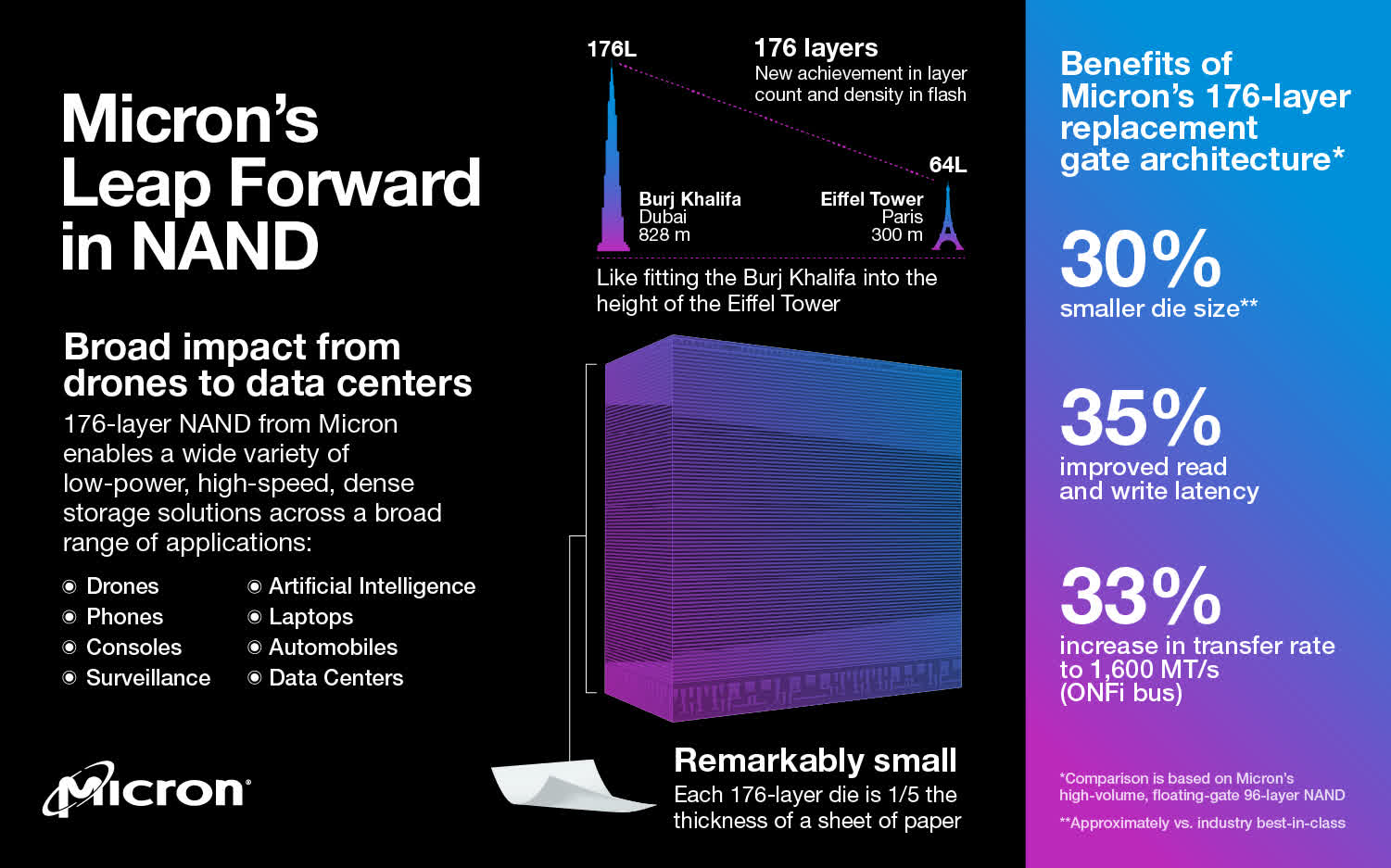The big picture: Micron anticipates the new 3D NAND will be utilized across a range of industries including autonomous vehicles, in-car infotainment systems and mobile storage as well as client / data center solid-state drives. Micron even offers a single-pass programming algorithm to make integration easier and shorten the time it takes to get a product into market.

Micron this week announced that it has commenced volume shipments of the world’s first 176-layer 3D NAND flash memory.
The American memory specialist said its new layer count is nearly 40 percent higher than their nearest competitor’s and is the most technologically advanced NAND node in the market. Compared to Micron’s own previous generation 3D NAND, this new 176-layer flash memory improves read and write latency by more than 35 percent, which goes a long way in accelerating overall application performance.
It also features a roughly 30 percent smaller die size than best-in-class competitor solutions, making it ideal for use where physical real estate is at a premium.
Micron said its 176-layer 3D NAND is currently in production at its fab in Singapore and is actively shipping to customers. It’ll also be included in new Crucial-branded consumer SSDs, we’re told.
The memory maker is planning to introduce more new products based on the technology in 2021.
Thumbnail courtesy Remus Rigo
https://www.techspot.com/news/87543-micron-now-shipping-world-first-176-layer-3d.html